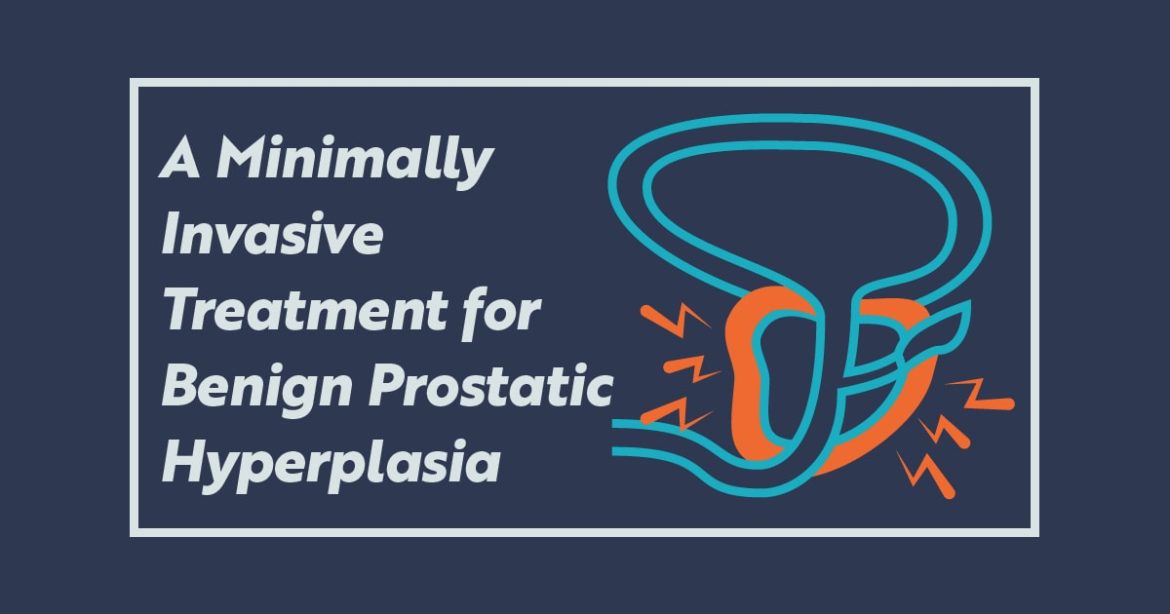Benign prostatic hyperplasia (or BPH) is a non-cancerous condition in which the prostate gland is enlarged. It can lead to a frequent need to urinate and other symptoms. Treatment options include medications and, in more severe cases, traditional surgery. However, interventional radiologists have a safer, minimally invasive treatment option: Prostate Artery Embolization (PAE).
Article Reviewed by Ziv Haskal, M.D.
Prostate Facts
The prostate is a gland in the male reproductive system. It produces seminal fluid, which is the fluid that carries sperm. The prostate surrounds the urethra, the tube that carries urine from the bladder out through the penis. When the prostate is enlarged, it can press on the urethra and cause difficulty with urinating.
What is Benign Prostatic Hyperplasia (BPH)?

Benign prostatic hyperplasia (or BPH) is a non-cancerous condition in which the prostate gland is enlarged due to an increase in cell number. As the prostate grows, it squeezes the urethra and can cause problems with urination.
Common symptoms of BPH include:
- Frequent urge to urinate, particularly at night
- Urgency and difficulty controlling urine
- Sensation of incomplete bladder emptying
- Straining to start urination or weak urine flow
- Leakage or dribbling either before or after urination
- Blood in urine
- Frequent urinary tract infections (UTI) due to incomplete emptying of bladder or retention
BPH is the most common prostate problem for men over the age of 50. It’s found in nearly 50% of men between the ages of 31 and 60 and up to 90% of men over the age of 80. Erectile dysfunction, obesity, diabetes or a genetic history of BPH can increase your risk of developing BPH. The exact cause of BPH is unknown.
Treatment Options

The symptoms of BPH can range from mild and uncomfortable to severe and debilitating. Many mild cases are not treated immediately, but are monitored regularly with yearly exams to make sure symptoms aren’t worsening.
If your BPH requires treatment, options include medications, surgeries, and minimally invasive procedures. For severe BPH symptoms, sometimes traditional surgeries are necessary. But surgeries come with increased risks and longer recovery times. You and your care provider should work together to find the best treatment path for you.
A Safer, Minimally Invasive Alternative: Prostate Artery Embolization (PAE)

Interventional radiologists perform minimally invasive, image-guided procedures to treat conditions that once required open surgery. The minimally invasive treatment option for BPH is called Prostate Artery Embolization (or PAE). Interventional radiologists have performed this evidence-proven procedure in thousands of men worldwide.
During prostate artery embolization, the radiologist makes a small incision on the upper thigh or groin. He or she uses imaging to guide a tiny catheter into the arteries that supply blood to the prostate. The catheter is about the size of a spaghetti noodle.
Next, the radiologist injects small particles that block the blood flow to the prostate. This starves the prostate of blood, oxygen and other nutrients, causing the prostate to shrink.
Prostate artery embolization can relieve or lessen urinary symptoms caused by BPH without the need for surgery. Unlike surgery, it has much lower risks of incontinence or sexual dysfunction. It also has a shorter recovery time than traditional surgery.
Prostate Artery Embolization at UVA
The skilled interventional radiologists at the University of Virginia are proud to offer prostate artery embolization as a minimally invasive treatment for BPH.
If you notice any of the symptoms of BPH, talk to your care provider. Or visit UVAHealth.com to schedule a consultation with Dr. Ziv Haskal or one of our other interventional radiologists. They can help determine if PAE is the right option for you.



